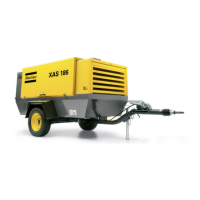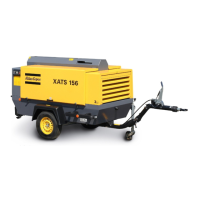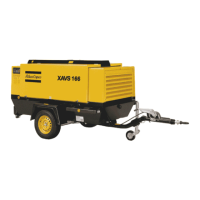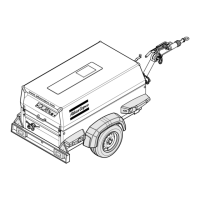- 12 -
17 Noise, even at reasonable levels, can
cause irritation and disturbance which,
over a long period of time, may cause
severe injuries to the nervous system of
human beings. When the sound
pressure level, at any point where
personnel normally has to attend, is:
- below 70 dB(A): no action needs to
be taken,
- above 70 dB(A): noise-protective
devices should be provided for
people continuously being present in
the room,
- below 85 dB(A): no action needs to
be taken for occasional visitors
staying a limited time only,
- above 85 dB(A): room to be
classified as a noise-hazardous area
and an obvious warning shall be
placed permanently at each entrance
to alert people entering the room, for
even relatively short times, about the
need to wear ear protectors,
- above 95 dB(A): the warning(s) at
the entrance(s) shall be completed
with the recommendation that also
occasional visitors shall wear ear
protectors,
- above 105 dB(A): special ear
protectors that are adequate for this
noise level and the spectral
composition of the noise shall be
provided and a special warning to
that effect shall be placed at each
entrance.
18 The unit has parts, which may be
accidentally touched by personnel, of
which the temperature can be in exess
of 80 °C (176 °F). The insulation or
safety guard, protecting these parts
shall not be removed before the parts
have cooled down to room temperature.
19 Never operate the unit in surroundings
where there is a possibility of taking in
flammable or toxic fumes.
20 If the working process produces fumes,
dust or vibration hazards, etc., take the
necessary steps to eliminate the risk of
personnel injury.
21 When using compressed air or inert gas
to clean down equipment, do so with
caution and use the appropriate
protection, at least safety glasses, for
the operator as well as for any
bystander. Do not apply compressed air
or inert gas to your skin or direct an air
or gas stream at people. Never use it to
clean dirt from your clothes.
22 When washing parts in or with a
cleaning solvent, provide the required
ventilation and use appropriate
protection such as a breathing filter,
safety glasses, rubber apron and gloves,
etc.
23 Safety shoes should be compulsory in
any workshop and if there is a risk,
however small, of falling objects,
wearing of a safety helmet should be
included.
24 If there is a risk of inhaling hazardous
gases, fumes or dust, the respiratory
organs must be protected and
depending on the nature of the hazard,
so must the eyes and skin.
25 Remember that where there is visible
dust, the finer, invisible particles will
almost certainly be present too; but the
fact that no dust can be seen is not a
reliable indication that dangerous,
invisible dust is not present in the air.
26 Never operate the unit at pressures or
speeds below or in excess of its limits as
indicated in the technical
specifications.

